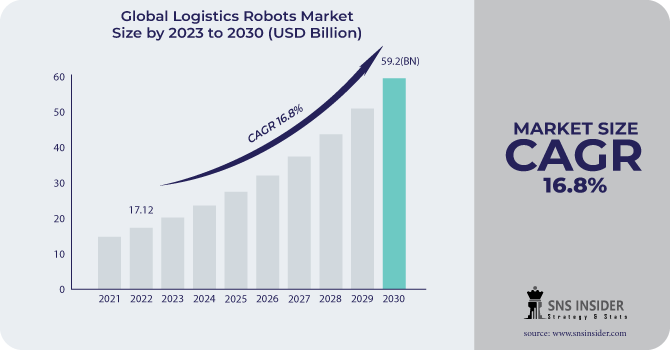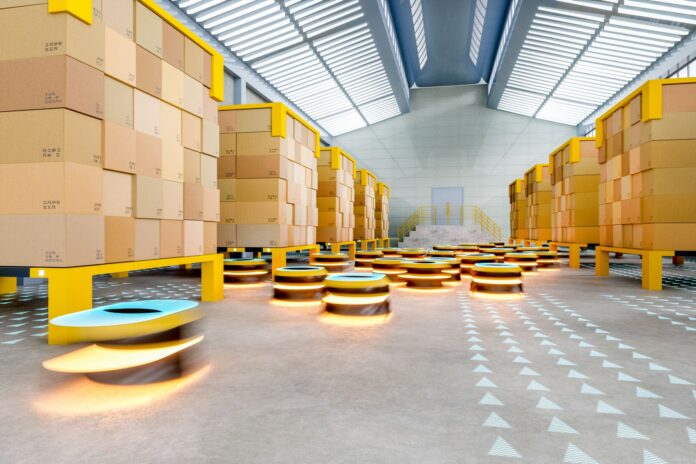Market Scope & Overview:
The global Logistics Robots market research study provides an in-depth look at the existing and future state of the business. The analysis includes all essential market data and was conducted through intensive primary and secondary research. The report also provides market volume and value for each segment, as well as information from segments such as type, industry, channel, and others. The major market players, distributors, and supply chain structure are also examined in the report. It also considers the aspects and qualities that could influence market sales growth.
The study includes detailed market size, share, production capacity, demand, and growth numbers for the industry during the projection period. For market actors preparing for future pandemics, the most recent COVID-19 scenario report is excellent. In different parts of the world, the coronavirus outbreak had varying repercussions on the global economy. The market is fast evolving, according to the Logistics Robots research report, and the influence is being explored in the current context as well as future estimates.

Market Segmentation:
Global marketing data, competitive climate surveys, growth rates, and important development status information are all part of global research. Market segmentation by product type, application, end-user, and geography is discussed in the Logistics Robots research report. The research looks into the industry’s growth goals, cost-consciousness, and manufacturing procedures. A wide assessment of the core industry, including classification and definition, as well as the structure of the supply and demand chain, is also included in the study report.
Obtain a Sample Copy of this Report @ https://www.snsinsider.com/sample-request/3816
Key Market Segmentation:
By Industry:
-E-commerce
-Healthcare
-Retail
-Food & Beverages
-Automotive
-Others (Consumer Electronics)
By Type:
-Autonomous Mobile Robots
-Automated Guided Vehicles
-Robot Arms
-Others (UAVs)
By Application:
-Pick & Place
-Palletizing & De-palletizing
-Transportation
-Others (Shipment & Delivery)
Regional Analysis:
This portion of the research is crucial for understanding market dynamics around the world. North America, Latin America, Europe, Asia Pacific, and the Middle East and Africa make up the Logistics Robotsmarket geographically. From production and consumer ratios to market size and market share, import and export ratios, supply and demand, consumer demand ratios, technological improvements, R&D, infrastructure development, economic expansion, and a strong market presence in every region, research comprises everything. Import/export studies, supply and demand dynamics, regional trends and demands, and significant actors’ presence in each region’s production and consumption ratios are all taken into account.
Request a Discount for This Exclusive Report @ https://www.snsinsider.com/discount/3816
Key Players:
The major Key players are ABB Ltd, Omron Corporation, KUKA AG, Kion Group Ag, Toyota Industries Corporation, Fanuc Corporation, Toshiba Corporation, Krones AG, Kawasaki Heavy Industries Ltd., Yaskawa Electric Corporation and Other Players.
Market Dynamic:
1. E-commerce Expansion: The growth of e-commerce and online retail is fueling the demand for logistics robots. With the rising volume of orders and the need for quick order fulfillment, companies are turning to robots for faster and more accurate picking, packing, and sorting processes.
2. Growing Demand for Automation: The increasing need for automation in logistics and supply chain operations is a major driver of the market. Companies are leveraging logistics robots to improve efficiency, reduce labor costs, and enhance operational flexibility.
3. Technological Advancements: Rapid advancements in robotics, artificial intelligence, and sensor technologies are driving innovation in logistics robots. Newer robots are more intelligent, efficient, and adaptable, enabling them to perform complex tasks in dynamic warehouse environments.
4. Cost Considerations: While the benefits of logistics robots are significant, upfront investment costs can be substantial. Companies need to carefully evaluate the return on investment and total cost of ownership when considering adoption of robotics solutions.
5. Focus on Warehouse Optimization: Companies are increasingly focused on optimizing warehouse space and workflows to meet growing customer demands and improve operational efficiency. Logistics robots play a critical role in maximizing space utilization, reducing inventory errors, and streamlining order fulfillment processes.
Competitive Outlook:
The industry’s most notable acquisitions, collaborations, and product launches are highlighted in the Logistics Robots market research. To provide deeper insights into important players, the study report combines modern research approaches such as SWOT and Porter’s Five Forces analysis. The research presents a complete view of the worldwide competitive landscape, as well as crucial insights into the major rivals and their expansion ambitions. It also contains crucial data on financial conditions, worldwide positioning, product portfolios, sales and gross profit margins, as well as technological and research advances.
Buy Now to Secure Your Copy @ https://www.snsinsider.com/checkout/3816
Conclusion:
The logistics robots market is witnessing a significant transformation driven by advancements in automation technology and the increasing demand for efficient supply chain operations. As highlighted throughout this analysis, logistics robots play a crucial role in various industries, including e-commerce, healthcare, retail, food & beverages, automotive, and others, by enhancing productivity, accuracy, and safety in warehouse and distribution centers.
The adoption of logistics robots, including automated guided vehicles (AGVs), autonomous mobile robots (AMRs), robot arms, and unmanned aerial vehicles (UAVs), is enabling businesses to streamline processes such as palletizing & de-palletizing, pick & place, transportation, and shipment & delivery. This integration of robotics is reshaping the logistics landscape, driving operational efficiency, and reducing labor costs.
